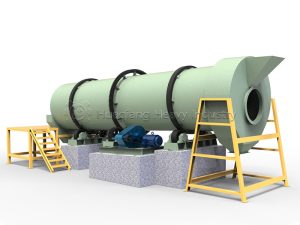Stepping into a modern fertilizer production plant, the rotary drum granulator is always one of the most eye-catching “protagonists.” Its cylindrical drum rotates slowly, like a patient craftsman, thoroughly mixing and kneading the powdered raw materials and binder. The loose powder gradually gathers into round, uniform granules, with a stable formation rate exceeding 90%. Whether producing high-concentration compound fertilizer or environmentally friendly organic fertilizer, it can easily handle it. It can even adjust the granule diameter according to demand, flexibly switching from 2 mm to 8 mm to meet the fertilization needs of different crops.

However, the rotary drum granulator’s magic relies on the assistance of other fertilizer equipment. During the raw material pretreatment stage, a crusher pulverizes large pieces of ore, straw, and other raw materials into a fine powder, clearing the way for subsequent granulation. A fertilizer mixer, like a precise “seasoner,” blends nitrogen, phosphorus, potassium, and trace elements in the right proportions to ensure a balanced nutrient profile for each granule. The granules are damp as they emerge from the drum, so the dryer immediately takes over, removing moisture at a steady temperature to prevent clumping. Finally, a rotary screener machine sorts the granules, sending any unqualified fines or lumps back for reprocessing to ensure the quality of the finished product.
Today, new rotary drum granulators incorporate energy-saving designs, reducing both energy consumption and dust emissions, thus meeting environmental requirements while safeguarding worker health. The synergy between the rotary drum granulator and these other devices significantly improves fertilizer production efficiency, providing a strong impetus for agricultural harvests.


